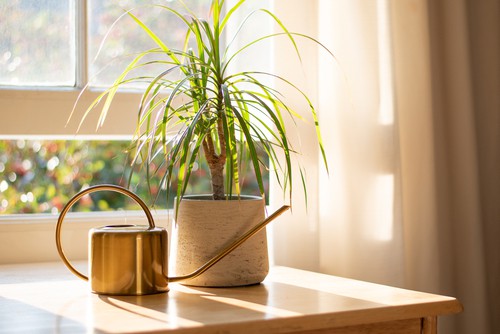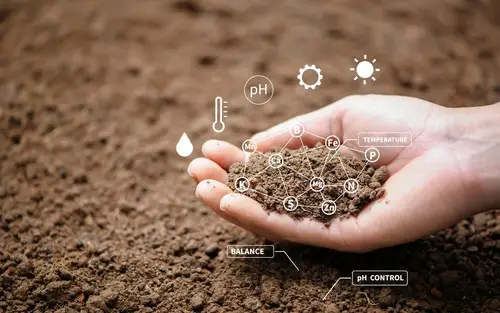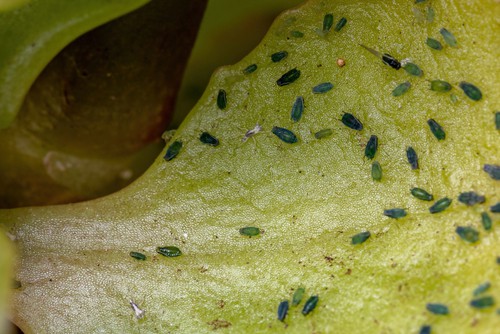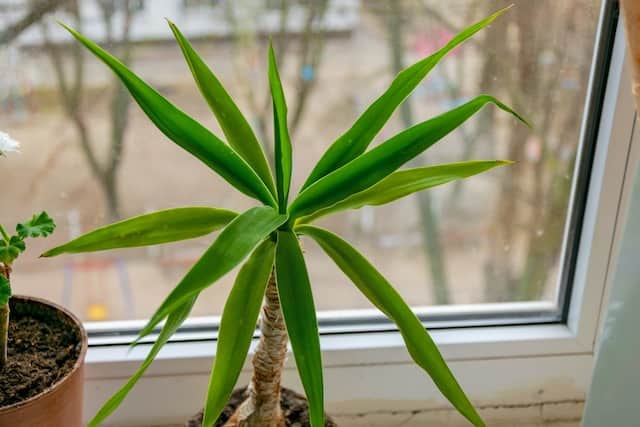Dracaena plants are popular indoor plants that are known for their easy-care nature, attractive foliage, and air-purifying qualities. However, if you notice that your dracaena leaves are turning yellow and falling off, it can be a cause for concern. Yellowing and falling leaves are not uncommon in dracaena plants, and there can be several reasons behind this issue.
One of the most common causes of yellowing and falling leaves in dracaena plants is overwatering. Overwatering can lead to root rot, which can cause the leaves to turn yellow and fall off.
Other causes of yellowing and falling leaves in dracaena plants include poor soil drainage, low humidity levels, and pest infestations. Understanding the causes of this issue is the first step towards reviving your dracaena plant.
Key Takeaways on Dracaena Leaves Turning Yellow and Falling Off
- Yellowing and falling leaves in dracaena plants are often caused by overwatering, poor soil drainage, low humidity levels, and pest infestations.
- Proper watering and humidity levels, as well as well-draining soil and healthy roots, are essential for maintaining a healthy dracaena plant.
- Regular pruning, fertilizing, and repotting can also help keep your dracaena plant healthy and thriving.
Check out these other related posts:
Understanding Dracaena Plants

Dracaena plants are a popular choice for indoor gardening due to their ornamental appeal and ease of care. They are native to tropical regions of Africa and can grow up to 10 feet tall.
Dracaena plants have strap-like leaves that can be green or variegated with white, cream, yellow or red edges. The central wooden trunk of the plant produces new leaves as it grows.
There are over 40 species of Dracaena plants, but the most commonly grown species is the Dracaena marginata, also known as the dragon tree. This plant is known for its thin, spiky leaves that grow in a rosette pattern and its woody stem.
Dracaena plants are popular houseplants because they are relatively low-maintenance and can tolerate a range of lighting conditions. They prefer bright, indirect light but can also grow in low light conditions. They can also tolerate some neglect and can go for extended periods without water.
However, despite their hardiness, Dracaena plants can suffer from a number of issues, including yellowing leaves and leaf drop. These issues can be caused by a variety of factors, including overwatering, underwatering, poor soil quality, and pests.
To keep your Dracaena plant healthy, it’s important to understand its needs and provide it with the proper care. This includes ensuring that the plant is planted in well-draining soil, watering it appropriately, and providing it with the right amount of light. With proper care, your Dracaena plant can thrive and provide you with years of enjoyment.
Dracaena Leaves Turning Yellow and Falling Off – 4 Common Problems
Dracaena leaves turning yellow and falling off can be a sign of various underlying issues. In most cases, it is a natural process of aging, but it can also be due to environmental factors or pests. Here are some of the most common causes of yellowing and falling leaves in Dracaena plants:
1. Aging
As Dracaena plants age, their lower leaves start to turn yellow and eventually fall off. This is a natural process and nothing to worry about. However, if the yellowing and falling leaves are happening at a faster rate than usual, it could be a sign of other issues.
2. Environmental Factors
Dracaena plants are sensitive to environmental factors such as heat, cold drafts, sudden temperature changes, low light, and low humidity levels. Exposure to dry heat or full sun can cause the leaves to turn yellow and fall off. On the other hand, low light or indirect light can cause the leaves to become pale and droopy.
3. Overwatering or Underwatering

Overwatering or underwatering can also cause yellowing and falling leaves in Dracaena plants. Overwatering can lead to root rot, which can cause the leaves to turn yellow and fall off. Underwatering can cause the leaves to become dry and brittle, which can also cause them to fall off.
4. Pests
Pests such as spider mites and mealybugs can also cause yellowing and falling leaves in Dracaena plants. These pests feed on the leaves, which can cause them to turn yellow and fall off. If you suspect that your plant is infested with pests, you should take immediate action to get rid of them.
Watering and Humidity Requirements
Dracaena plants prefer to be kept damp but not wet or saturated. Overwatering is a common cause of yellowing leaves, as it can lead to root rot and fungus. To check if the plant needs watering, it is recommended to finger-check the moisture level of the soil. If the soil feels dry to the touch, it is time to water the plant.
It is important to note that the watering schedule for Dracaena plants may vary depending on the environment. For instance, plants in a humid environment may require less watering than those in a dry environment. Similarly, plants in a low-light environment may require less watering than those in a high-light environment.
Rainwater or distilled water is ideal for watering Dracaena plants, as tap water may contain chemicals that can harm the plant. If rainwater or distilled water is not available, it is recommended to let tap water sit for a few hours before using it to water the plant.
Misting the plant with water or using a humidifier can help increase the humidity around the plant. Alternatively, placing the plant on a pebble tray filled with water can also help increase the humidity. However, it is important to avoid placing the plant in standing water, as this can lead to root rot.
In terms of soil moisture, it is important to keep the soil moist but not soggy. Excessive watering can lead to yellowing leaves, while dry soil can cause the leaves to wilt. It is recommended to water the plant thoroughly and allow the soil to dry out slightly before watering again.
Soil and Drainage Conditions

One of the most common reasons for Dracaena leaves turning yellow and falling off is improper soil moisture. Overwatering is the most common cause of yellowing leaves among Dracaena plants. Dracaena likes to be kept damp but not wet or saturated. Therefore, keeping a regular watering schedule is key.
Soil type and drainage are also essential factors in preventing yellowing leaves. Dracaena plants prefer well-draining soil that is rich in organic matter. The soil should be able to hold enough moisture to prevent the plant from drying out but should also drain well enough to prevent waterlogging.
When potting a Dracaena plant, it is recommended to use a well-draining potting soil mix that contains perlite, sand, or other substrates that improve drainage. Adding compost to the soil mix can also help retain moisture and improve soil structure.
It is also important to ensure that the pot has adequate drainage holes to allow excess water to drain out. If the pot does not have drainage holes, it is recommended to drill some holes in the bottom of the pot to prevent waterlogging.
When watering a Dracaena plant, it is essential to avoid letting the plant sit in standing water. Placing a saucer under the pot to catch excess water can be helpful, but it is important to empty the saucer regularly to prevent water from accumulating and causing root rot.
Root Health and Repotting
Dracaena plants are known for their hardiness and resilience. However, like any other plant, they can suffer from root problems. If the roots are unhealthy, the plant will not be able to absorb nutrients and water properly, leading to yellowing leaves and other symptoms of stress.
One of the most common root problems in Dracaena plants is root rot. This is caused by overwatering or poor drainage, which leads to the roots becoming waterlogged and susceptible to fungal infections. Signs of root rot include leaves turning yellow, wilting, and falling off, as well as a foul odor coming from the soil.
To prevent root rot, it’s important to ensure that the plant is not sitting in water and that the soil is well-draining. If the plant is in a pot, make sure that there are drainage holes at the bottom and that excess water can flow out. If the roots have grown through the holes and clogged them, it may be time to repot the plant.
Repotting a Dracaena plant can help improve root health and prevent root rot. This should be done every 2-3 years or when the plant has outgrown its pot. When repotting, choose a pot that is one size larger than the current one and use fresh, well-draining soil.
To repot a Dracaena plant, follow these steps:
- Gently remove the plant from its current pot, being careful not to damage the roots.
- Remove any dead or damaged roots.
- Place a layer of fresh soil at the bottom of the new pot.
- Place the plant in the new pot and fill in with fresh soil, making sure to leave enough space at the top for watering.
- Water the plant thoroughly and allow the excess water to drain out.
Pests and Diseases

Dracaena plants are relatively hardy and can withstand various environmental conditions. However, they are still susceptible to pests and diseases that can cause yellowing and falling off of leaves.
Pests
Pests such as spider mites, mealybugs, and scale insects can infest dracaena plants and cause damage to the leaves. These pests suck the sap from the leaves, which can cause yellowing and wilting. Spider mites are tiny pests that are barely visible to the naked eye, but they can cause significant damage to the plant if left unchecked.
Mealybugs are small, white, fluffy insects that can be found on the leaves and stems of the plant. Scale insects are small, hard-shelled pests that attach themselves to the leaves and suck the sap from the plant.
To get rid of these pests, it is recommended to wipe the leaves with a damp cloth or spray the plant with insecticidal soap. It is also important to isolate the infected plant to prevent the spread of the infestation.
Diseases
Bacteria, fungus, and mold can also cause yellowing and falling off of dracaena leaves. Soft rot, a bacterial disease caused by Erwinia carotovora, can cause the leaves to turn yellow and mushy. Fungal diseases such as leaf spot and anthracnose can also cause yellowing and browning of the leaves.
To prevent the spread of these diseases, it is important to maintain good hygiene practices such as removing dead leaves and debris from the plant and avoiding overwatering. Fungicides can also be used to treat fungal diseases.
Water Quality and Treatment
The quality of water used for watering Dracaena plants can have a significant impact on their health. Tap water is often treated with chemicals such as chlorine and fluoride, which can be harmful to the plant. Chlorine can cause leaf burn, while fluoride can cause brown tips and edges on the leaves.
In addition to chemicals, tap water can also contain mineral deposits and salts that can build up in the soil over time. This can lead to salt buildup, which can cause yellowing of the leaves and even leaf drop.
To avoid these issues, it is recommended to use filtered or distilled water for watering Dracaena plants. This will remove any harmful chemicals and minerals from the water, ensuring that the plant receives only clean, pure water.
If filtered or distilled water is not available, it is important to treat tap water before using it to water the plant. This can be done by allowing the water to sit out overnight to allow any chlorine to evaporate, or by adding a water conditioner to the water.
Water conditioners can help to neutralize harmful chemicals and minerals in the water, making it safe for the plant to use.
Fertilizing and Pruning
Dracaena plants need regular fertilization to maintain their health and produce new growth. Liquid fertilizers or solid fertilizers can be used, but it is recommended to use a balanced fertilizer with equal amounts of nitrogen, phosphorus, and potassium. Superphosphate can also be added to the soil to promote healthy root growth.
Monthly fertilizing is recommended during the growing season, which is typically from spring to early fall. During the winter months, fertilizing should be reduced or stopped altogether. Over-fertilizing can cause salt build-up in the soil and lead to leaf burn or other issues.
Pruning is also important for maintaining a healthy and attractive dracaena plant. Dead or yellowing leaves should be removed promptly to prevent the spread of disease or pests. New growth can be encouraged by pruning back the top of the plant, which will stimulate the growth of new branches and leaves.
When pruning, it is important to use sharp, clean tools to prevent damage to the plant. Any cuts should be made at a 45-degree angle to promote healing and prevent water from collecting on the cut surface.
Reviving a Dracaena Plant

If a Dracaena plant is experiencing yellow leaves and leaf drop, it may be on the verge of death. However, with proper care and attention, it is possible to revive the plant. Here are some tips on how to revive a Dracaena plant:
1. Evaluate the Plant’s Environment
The first step in reviving a Dracaena plant is to evaluate its environment. Ensure that the plant is receiving the right amount of bright indirect sunlight. If the plant is not getting enough light, move it to a brighter location. If the plant is getting too much direct sunlight, move it to a shadier spot.
Next, check the temperature range. Dracaena plants prefer temperatures between 60-80°F. If the temperature is too low, move the plant to a warmer location. If the temperature is too high, move the plant to a cooler location.
2. Adjust Watering
Overwatering is a common cause of yellow leaves and leaf drop in Dracaena plants. Check the soil moisture level by sticking your finger into the soil. If the soil feels damp or wet, do not water the plant. If the soil feels dry, water the plant until water flows out of the drainage holes. Wait until the soil is dry before watering again.
3. Use Neem Oil
If the Dracaena plant has pests, such as spider mites or mealybugs, use neem oil to get rid of them. Neem oil is a natural pesticide that is safe for humans and pets. Mix one tablespoon of neem oil with one quart of water and spray the plant thoroughly. Repeat every two weeks until the pests are gone.
4. Moderate Humidity
Dracaena plants prefer moderate humidity levels. If the air is too dry, the leaves may turn yellow and fall off. To increase humidity levels, place a tray of water near the plant or use a humidifier.
Dracaena Care for Different Environments
Dracaena plants can grow in various environments, both indoors and outdoors. However, the care requirements for these plants vary depending on the environment they are placed in. Here are some tips on how to care for dracaena plants in different environments:
Indoors
Indoor dracaena plants require a bit more attention than their outdoor counterparts. Here are some tips on how to care for dracaena plants indoors:
- Light: Dracaena plants thrive in bright, indirect light. Place the plant near a window where it can receive plenty of natural light without being exposed to direct sunlight.
- Watering: Overwatering is a common cause of yellowing leaves in dracaena plants. Water the plant only when the top inch of soil is dry to the touch. Be sure to drain any excess water from the saucer to prevent waterlogging.
- Humidity: Dracaena plants prefer a humid environment. Mist the leaves with water occasionally or place a humidifier near the plant to increase the humidity levels.
Outdoors
Dracaena plants can also be grown outdoors in warm climates. Here are some tips on how to care for dracaena plants outdoors:
- Light: Dracaena plants can tolerate direct sunlight in outdoor environments. However, they still prefer bright, indirect light.
- Watering: Outdoor dracaena plants require less watering than indoor plants. Water the plant only when the top inch of soil is dry to the touch. Be sure to water deeply to encourage deep root growth.
- Soil: Dracaena plants prefer well-draining soil. If the soil is too compact, it can cause waterlogging and root rot. Add perlite or sand to the soil to improve drainage.
Frequently Asked Questions
Why are the leaves on my Dracaena plant turning yellow and falling off?
Yellow leaves on a Dracaena plant can be caused by a variety of factors, including overwatering, underwatering, too much direct sunlight, or exposure to cold temperatures. If the leaves are turning yellow and falling off, it may be a sign that the plant is not getting enough water or that the soil is not draining properly.
Should I remove yellow leaves from Dracaena?
Yes, it is recommended to remove yellow leaves from a Dracaena plant as they will not recover and can attract pests or diseases. Use clean, sharp scissors or pruning shears to cut the leaves as close to the stem as possible.
What does an underwatered Dracaena look like?
An underwatered Dracaena plant may have yellow or brown tips on the leaves, dry soil, and drooping leaves. The plant may also be lighter in weight than usual.
How do you revive an overwatered Dracaena?
To revive an overwatered Dracaena plant, remove it from the soil and inspect the roots. If the roots are brown and mushy, trim them and repot the plant in fresh, well-draining soil. Allow the plant to dry out between waterings and avoid overwatering in the future.
How do You Fix Yellow Leaves on Dracaena Marginata Plants?
Yellow leaves on Dracaena Marginata plants can be caused by overwatering, underwatering, or exposure to cold temperatures. To fix yellow leaves, ensure the plant is getting the right amount of water and is not exposed to cold drafts. Trim any yellow leaves and provide the plant with bright, indirect sunlight.
Can Yellow Dracaena Marginata Leaves Turn Green Again?
Unfortunately, yellow Dracaena Marginata leaves will not turn green again. It is important to address the underlying issue causing the yellowing and prevent further damage to the plant.

Hey, I’m Lisa and I’ve been an avid gardener for over 30 years. I love writing, talking and living in the garden! Feel free to connect with me on my socials below

